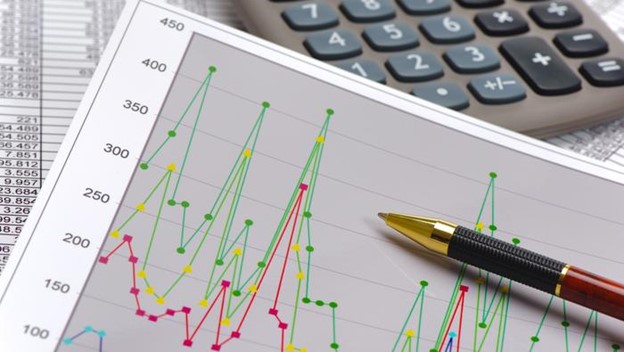
JOURNALING: CHARTING YOUR PATH TO SUCCESSFUL DAY TRADING
A large volume of professional literature has been published on the benefits of journaling, particularly in the fields of mental health and psychology. Not unlike the lockable diaries that children and adolescents in earlier times hid under their mattresses, journals are a way of recording experiences, thoughts, and feelings as a way of understanding them more clearly.
In terms of mental health, journaling is sometimes recommended as a means of managing anxiety, reducing stress, and coping with depression. It can help to prioritize personal and professional issues and to explore potential solutions and goals. Journaling has also proven to be a useful tool in the world of business, including trading.

Regardless if you are trading live or practicing in a simulator, journaling must be a part of your trading journey. The end result and analysis it offers can make the difference between success and failure in trading. This information can include:
- Your biggest loss
- Your biggest win
- Your ratio of losers to winners
- The commissions you are paying out
- The best time of the day for your trading
- The worst time of the day for your trading
- The average hold time for your trades
I use a free software called Screenshot Captor (or sometimes Lightshot) to take a screenshot from my platform right after I end a trade. I can see my entries and exits on the chart and I just add my thought process to my journal, along with anything else I think I should note from that trading day.
Keeping records of your trades will make you a better trader as it will enable you to reflect and learn from your past successes and failures. I strongly believe that the most important and the most effective way to continuously improve as a trader is to keep a diary of your trades. There are many consistently profitable traders around the world, trading different markets with different methods, but they all have one thing in common: they keep excellent records of their trades. It is a very tedious and boring task; but it is also a very necessary task. Journal your trades daily. Make sure to include the following points in your trading journal:
- Your physical well-being (lack of sleep, too much coffee, too much food the night before, etc.)
- The time of the day you made the trade
- The strategy you were anticipating
- How you found the opportunity (from a scanner, a chatroom, etc.)
- Quality of your entry (risk/reward)
- Sizing/management of your trade (scaling in and out as planned)
- Execution of exits (following profit targets or stop losses)
Bear Bull Traders members have shared some journal templates, and some members even share their own journals in our forums, you can review these journaling resources to implement your own process or improve yours.
In this video, Carlos talks about how to use reflection, review and journaling, as an improvement process for day traders.
Here are some of the benefits of journaling for traders:
Historical Record
Over a period of time, a journal will provide a historical perspective. It will summarize all your trades and show at a glance the state of your trading. It can become your personal performance database, giving you an opportunity to travel back in time and determine how often you traded, how successful each trade was, which currency pairs performed better for you, and what time frames gave up the best profit percentages.
Planning Tool
A good trade journal not only records your actual trade data, it should also provide information on your original plans for every trade. This enables you to consider each trade before you take it by establishing guidelines for where you want to enter, how much risk you can accept on the trade, where your profit target will be set, and how you will manage the trade as it proceeds.
Methodology Verification
Another very important outcome of a trading journal is that, over a period of time, it will verify your methodology. You will be able to see just how well your system performs in changing market conditions.
Mind Pattern Modification
One of the most useful features of your journal will be encouraging you to change your trading mindset. As you learn how to trade your plan, you will develop a greater level of confidence. Confidence is the best way to avoid the fear and greed cycle in which many traders become trapped. If you are winning, you want to win more; if you are losing, you feel fear and even panic as your account shrinks.
New traders often ask me how to improve after a series of losses and a period of struggling. I recommend to them that they review their journal and look more specifically, at what precisely they are doing poorly at in their trading. “I am doing poorly” doesn’t mean anything.
You cannot improve if you don’t have a proper record of your daily trades.
- Is it your stock selection?
- Is it your entry points?
- Is it your discipline or psychology?
- Is it your platform or clearing firm (broker)?
- What about other traders, is it a bad month for everyone or just for you?
I personally live video record all of my trades during the morning session (as I rarely make any trades Mid-day or at the Close). I believe traders, like athletes, should watch their trading videos. The best athletes and teams watch films of themselves to see what they’re doing right and wrong, and how best to improve. I will review my tapes during Mid-day and make sure to note important observations on my entry, exit, price action, Level 2 signals and so on. I try to learn as much as possible from my trades. Sometimes I look for new algorithmic programs that I must be aware of. I search for areas where I could have added more size. This is one of my trading weaknesses. I also do a poor job of holding for a longer time the stocks that are going in my favor. I therefore consider trades that I could have held longer. I make sure to find spots where I was too aggressive. I look for times where I took a trade even though it did not offer a good risk/reward opportunity. I review my position sizing and why and where I added more. That is How to Day Trade for a Living. There is no other way to get better. There are no excuses in trading.
Resources:
- Develop your trading skills with this free real time day trading simulator.
- Check out the most advanced tools for traders and investors: https://tradingterminal.com/
- Learn about one of the best technologies for active trading.
- A Glossary of terms frequently used in day trading.
Would you like to ask Andrew Aziz some questions or share your own experiences? He would enjoy hearing from you at [email protected].




